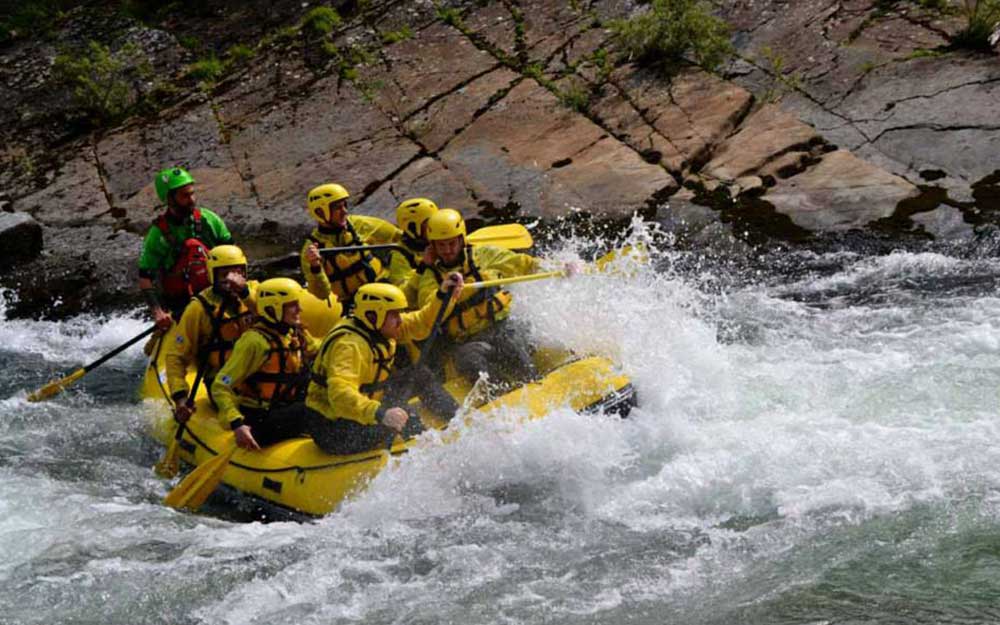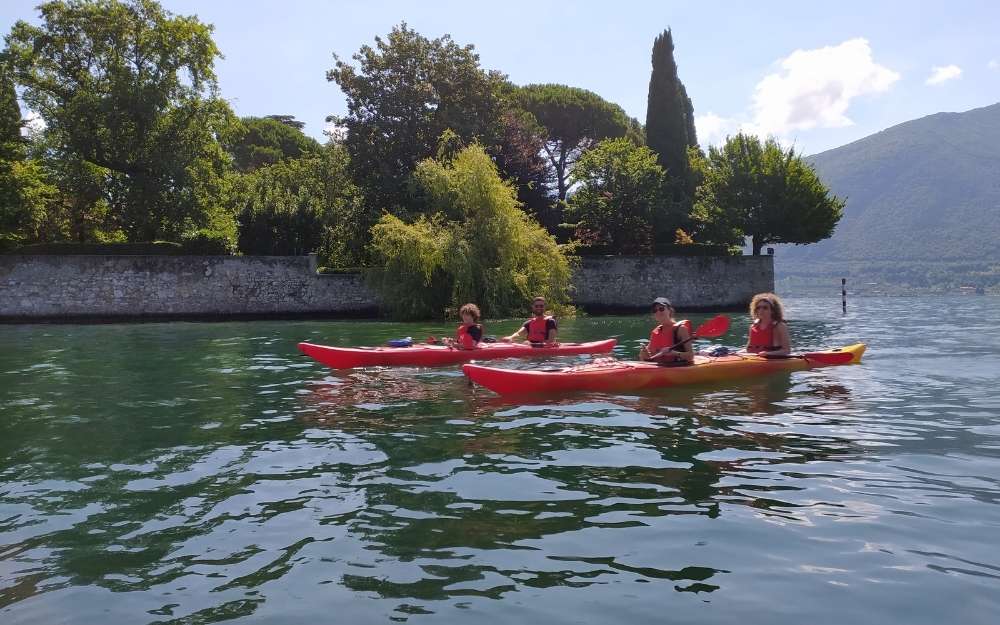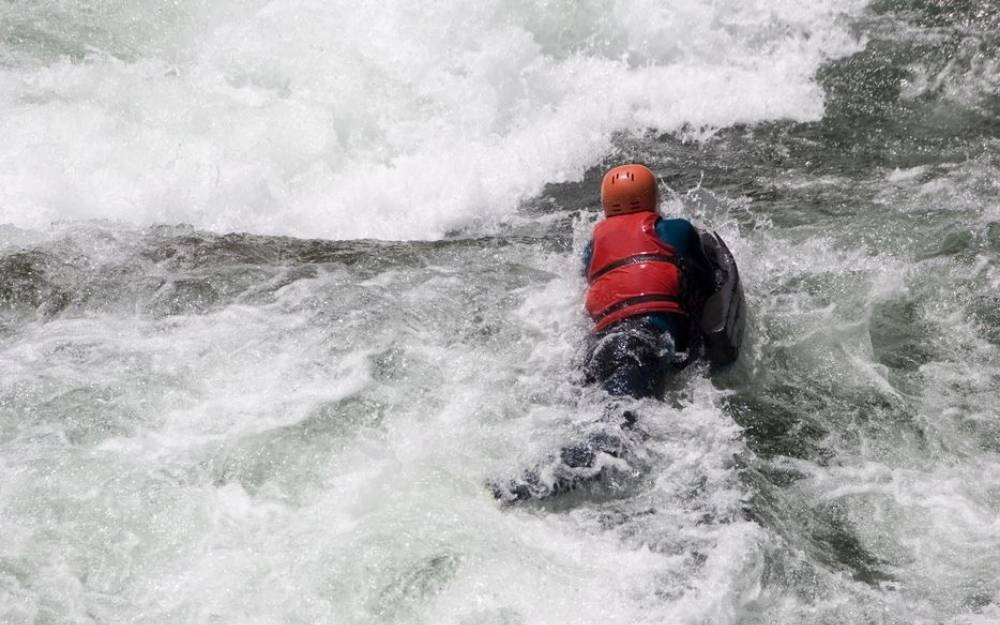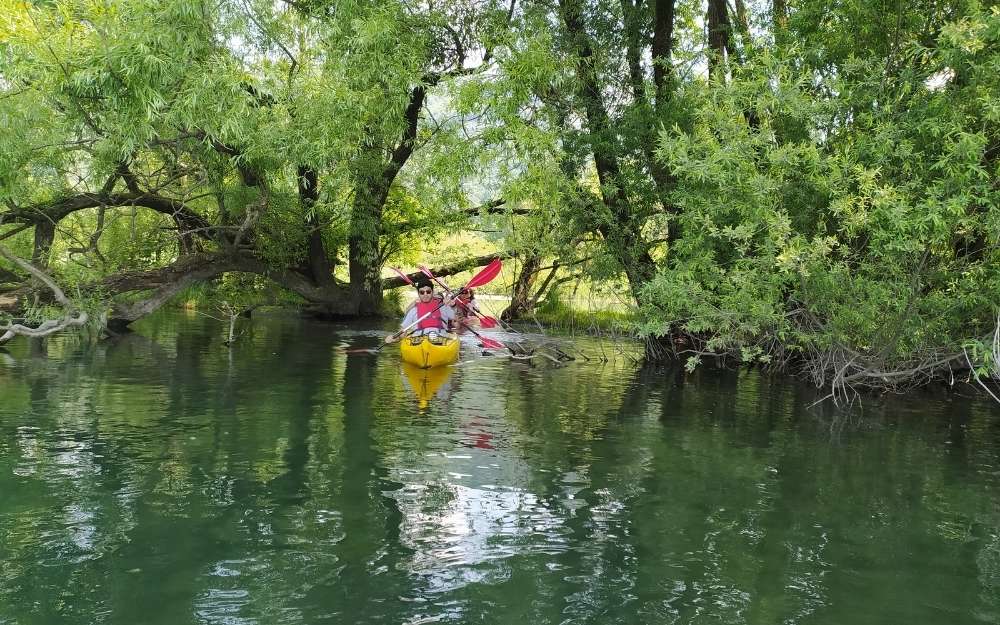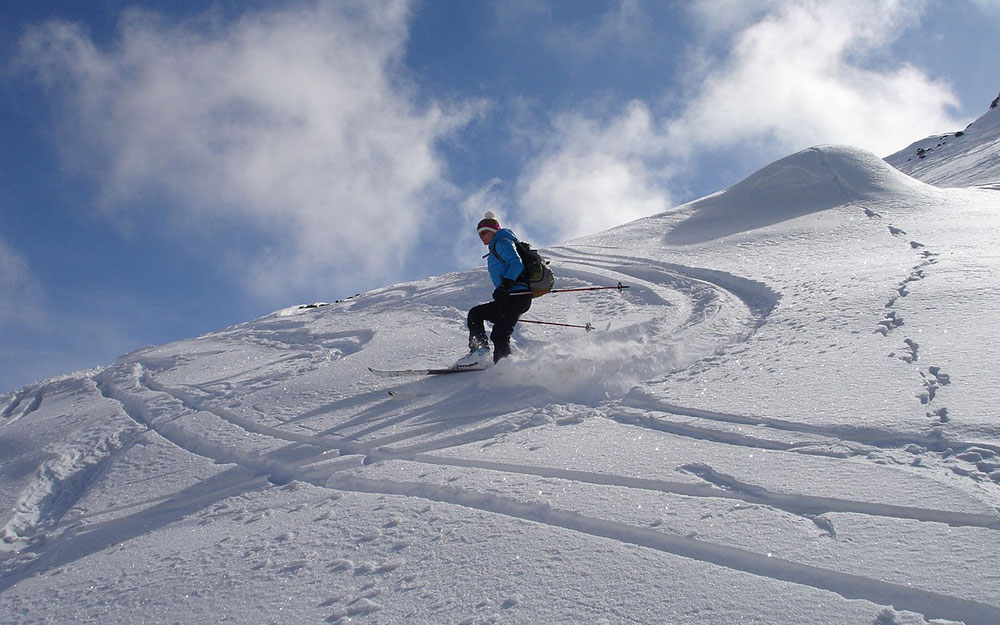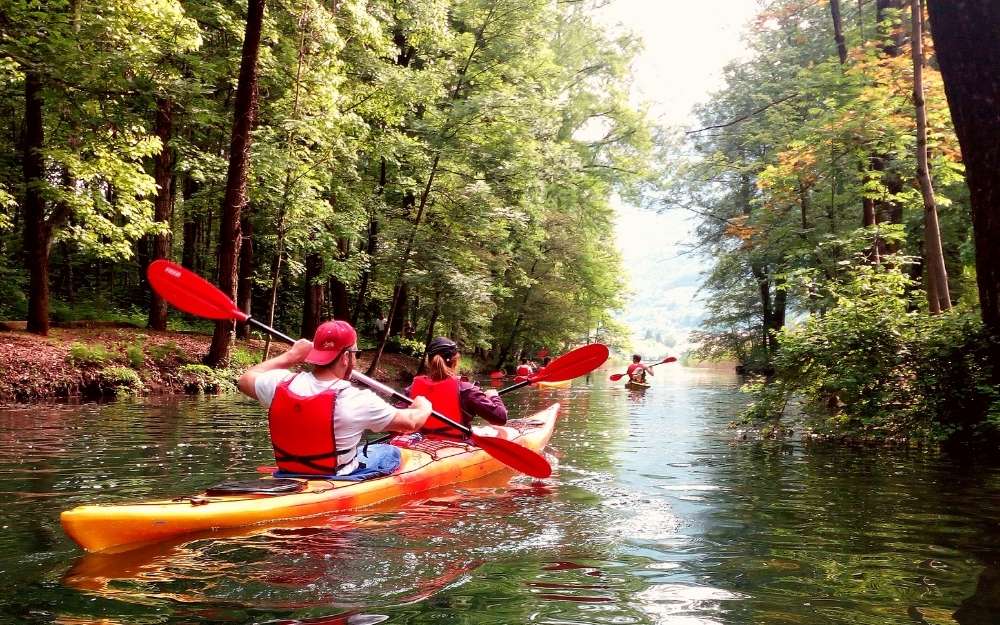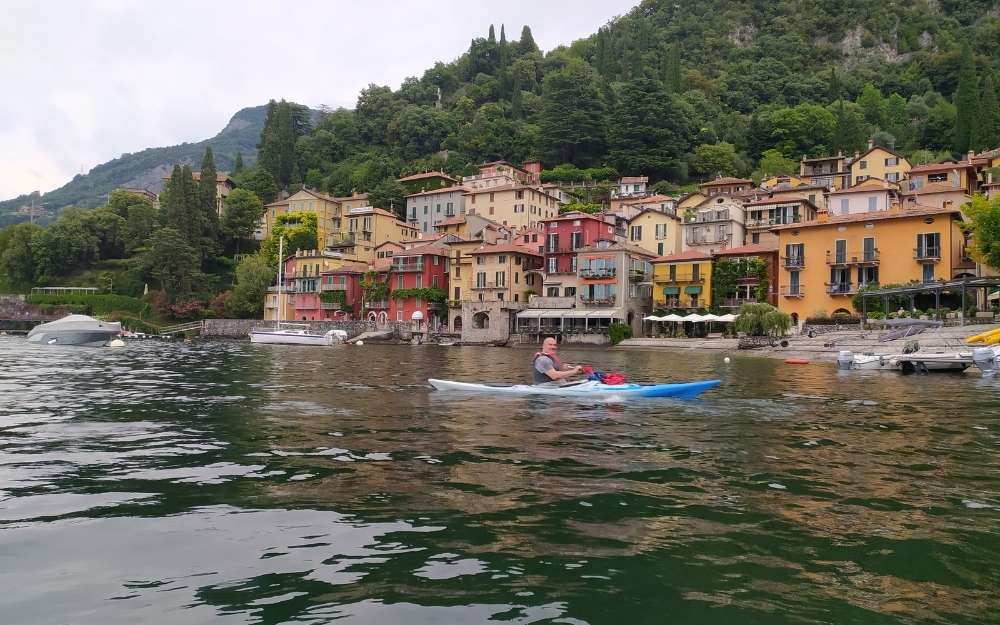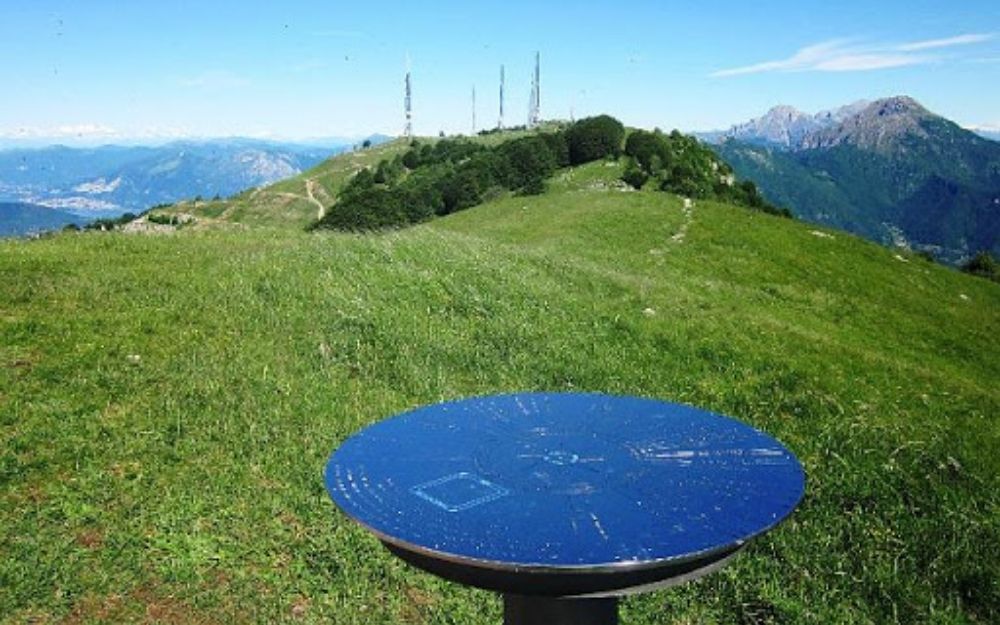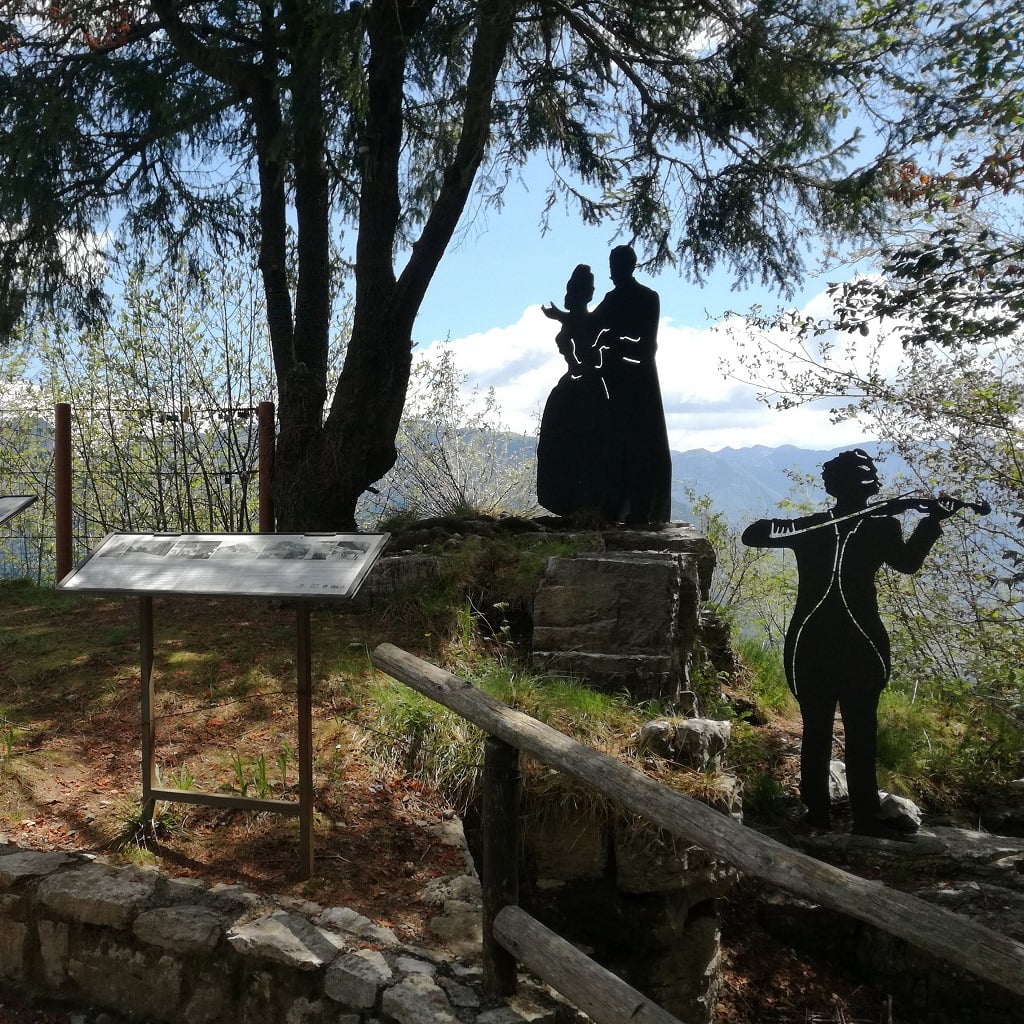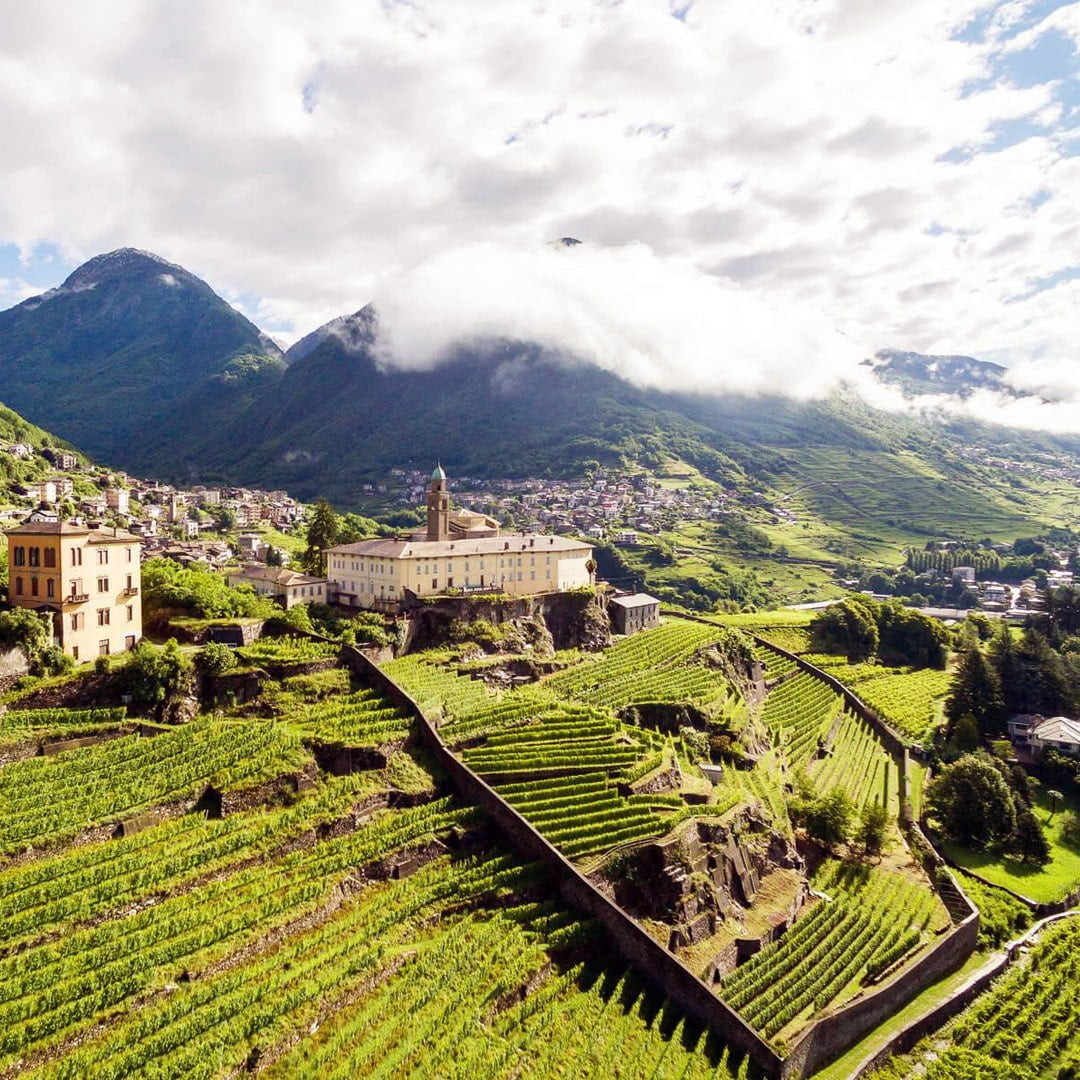Canyoning is a fascinating sport that consists of descending sections of gorges or ravines dug by mountain streams with the aid of ropes and with no other means than your own body. It is an adventurous and exciting sport, which has taken on playful connotations similar to those we know today in the 80s, in France. In reality, the practice of this discipline has much older origins, dating back to speleological explorations at the end of the 19th century and with scientific and exploratory purposes in the French Provence area.
In this article we will present an overview of this sporting activity. Furthermore, if you are interested in the cousin activity of canyoning, you can consult our article dedicated to river trekking.
- What is canyoning
- The best known places to practice canyoning in Italy
- Who can go canyoning
- What you need to go canyoning
- Why Choose BergamoXP?

1. What is canyoning?
As previously mentioned, canyoning became a real sporting activity only starting from the 80s of the last century, first in the gorges of the Pyrenees and Provence and then in Italy, Spain, Greece and Austria. Today this discipline is practiced in almost all of Europe, South and North America, Australasia.
In canyoning you go through the gorges, the rock beds of mountain streams, dug by the abrasive power of the water. These, in addition to being of variable length and width, are characterized and classified on the basis of verticality and the amount of water that flows through them, which consequently define the degree of difficulty. In general, but not in an absolute way, the greater the verticality and the force of the water, the greater the difficulty.
During canyoning speleological, mountaineering and canoeing techniques and skills are combined and you have the opportunity to truly get in touch with nature, exploring a wild environment where man is still a guest and which otherwise would have been unreachable. Pools of crystalline water, dives even of considerable height, toboggans (natural water slides) and vertical rock walls are just some of the elements that distinguish the adventure in the gorge and that make canyoning an exciting and adrenaline-pumping activity.

2. The best known places to practice canyoning in Italy
Below we will list some of the most beautiful and renowned areas in Italy where it is possible to do commercial and tourist canyoning. Obviously we can’t bring them all back and we will surely forget some!
Having said this, let’s start with the locality that certainly has its tourist fame also linked to canyoning. We are talking about Garda and in particular its northernmost part, the Trentino area. Here, in fact, it is possible to find an infinite number of routes suitable for all levels, from beginners to those who want to experience more intense emotions!
Another very famous and appreciated area by lovers of this discipline is the Val d’Ossola, in Piedmont. Enhanced in more recent times than the Trentino Garda, even here you can find numerous routes suitable for all levels, set in an exceptional landscape context.
Lombard excellence can be found in Val Chiavenna, in Val Bodengo, on the stream of the same name. This route is divided into 3 sections, of increasing duration and difficulty. The first stretch is suitable for everyone, easy and fun. The second is ideal for those who already have some active gorges behind them and want to experience some intense emotion. Finally, the 3rd and last section is only suitable for expert canyoners.
Finally, reviewing the Alps, we cannot fail to mention the karst area of Friuli Venezia Giulia, which due to its geological conformation lends itself well to the formation of canyons and ravines ideal for walking, and which in fact abound here. The water of the streams of karst origin is also particularly transparent (both for the filter undergone by the water and for the reflections) giving the participants real
Going down the boot, in central Italy the regions where it is possible to go canyoning are mainly Umbria and Abruzzo, with medium-easy routes, generally less demanding than the Alpine ones due to the lower verticality. Finally, moving to the South, the best known place for canyoning is Calabria, in the splendid karst valley of the Lao river, inside the Pollino Park.

3. Who can go canyoning
As previously mentioned, the canyons have different levels of difficulty, due to the force of the water and the verticality of the gorge. It is also necessary to make a distinction between those who travel a canyon independently and those who instead make use of the professionalism of a guide.
In general, whether it is a guided or independent outing, good aquatic skills and not being afraid of heights are important prerequisites for being able to practice canyoning. It will also be necessary to be in athletic physical condition appropriate to the difficulty of the gorge traveled. Considering that usually in commercial canyoning outings, such as those that we organize at BergamoXP, only technically less demanding canyons are covered, participants will only be required to have a minimum of aquatic skills, not to be excessively afraid of heights and to be able to sustain the effort physical equivalent to a trek of about 4 hours. In the case of independent outings, on the other hand, it will be necessary to have good physical shape and aquatic skills, safe management of heights and an excellent knowledge of the mountaineering techniques necessary to tackle the progression in the ravine.

4. What you need to go canyoning
Again, even for the equipment necessary for canyoning it is necessary to distinguish between those who travel independently and those who instead rely on specialized centers such as ours.
In the latter case, participants are only required to bring a synthetic T-shirt, a bathing suit and a pair of sturdy sports or trekking shoes. Centers like ours will then provide neoprene wetsuits with a thickness of at least 5 mm. These can be whole or in two pieces, and may or may not have a hood. Boots will then be provided, also in neoprene, to protect the feet from the cold, an approved helmet, any buoyancy aid jacket, mountaineering harness with attached wetsuit protector. In the case of those who independently travel a ravine, in addition to the aforementioned material, it will be necessary to have: a 10.5mm static or semi-static rope, at least twice as long as the highest waterfall we will have to face, a knife, a whistle, carabiners , a descender, dry bags or barrels, a canyoning backpack, bracket or pedal for ascents, fixed and mobile ascender and a first aid kit.

BergamoXP
BergamoXP is the first aquatic sports center in the province of Bergamo. We are a team of nature enthusiasts, outdoor and adventure lovers, connoisseurs of our territory and professionals specializing in the disciplines of Kayak, Canyoning, Rafting, Hydrospeed, River Trekking.
Choose BergamoXP, adventure is waiting just around the corner!


